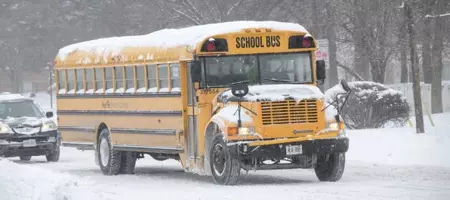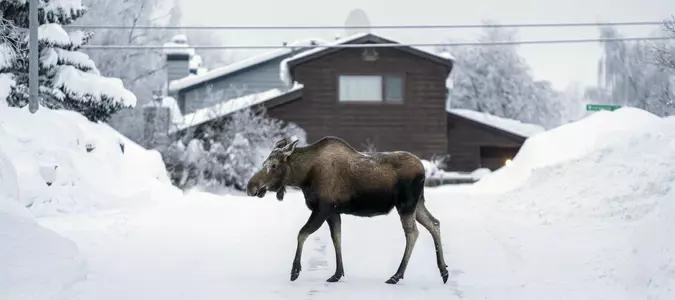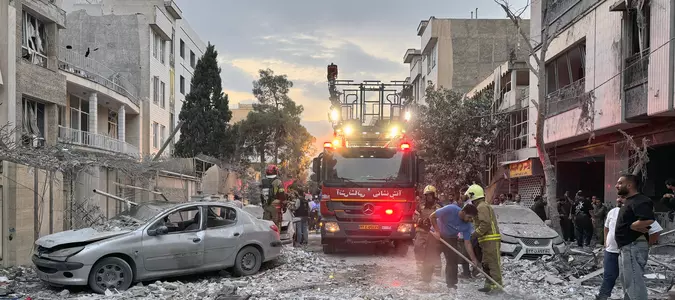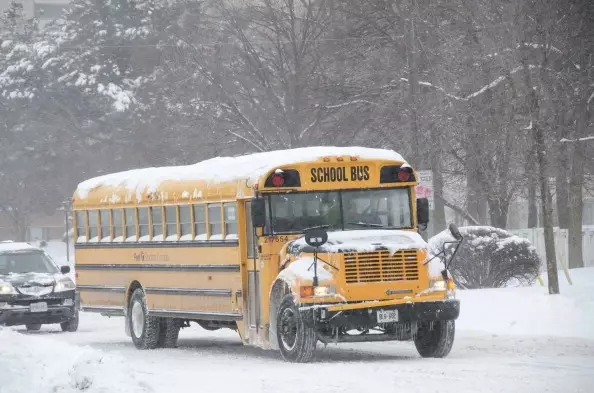

How a fateful 33 hours marked a critical turning point for schoolchildren
They jumped up and down, sang tunes, anything to keep them from falling asleep. The 22 kids of Pleasant Hill School and their driver were trapped in a brutal storm with no heat, food or water - and no end in sight.
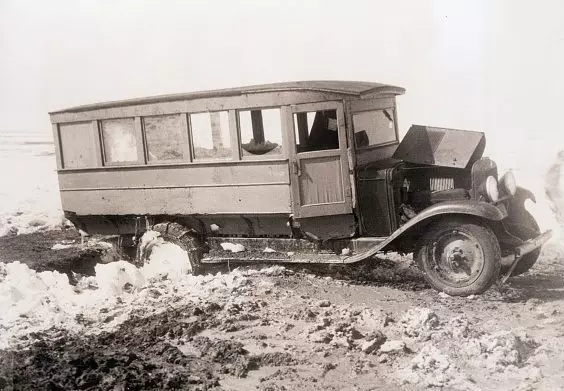
The school bus in which six children died when they were marooned in a Colorado blizzard on March 31, 1931. (Getty Images)
It was an unusually warm March morning for those parts of rural Colorado, more known for its long wintry days. The pleasant 60-degree weather prompted 11-year-old Louise Stonebraker to leave her house for Pleasant Hill School with only a light sweater, a recent birthday gift, instead of her regular jacket.
But just hours later on March 26, 1931, to the surprise of many in Kiowa County, the weather took a drastic turn for the worse, leaving Louise and her 21 classmates fighting for survival in blizzard-like conditions.
More than 90 years later, what came to be known as the Pleasant Hill school bus tragedy stands as the turning point that brought children's bus safety to the fore, sparking major regulations that remain in place today. Such regulations include what is now the trademark bright yellow school bus as well as a uniform code on what the transportation vehicles should include in their design.
The national attention that spurred those changes can be traced back to that seemingly pleasant spring morning in a remote part of eastern Colorado.
Two drivers were assigned to transport the students to Pleasant Hill School near Towner, with one picking up students in his car while Carl Miller, a local farmer, took care of the remaining students, who ranged in age from 7 to 15. Miller's bus was not the ordinary type of school bus we're accustomed to today. It was a makeshift vehicle consisting of a 1929 Chevrolet truck with a wooden body attached to the bed. Benches were used inside as seats in the unheated bus.
But as he set on his commute around 9 a.m., the sunny spring morning quickly turned to a blustery snowstorm, wintry conditions that would only escalate as the day went on. Once reaching the school, Miller and the two teachers made the decision to send the children home right away due to the increasingly perilous conditions (the school also didn't have much in terms of heating). So Miller’s bus started heading to a nearby farmhouse for safety. In a retrospective book on the tragedy, Children of the Storm, authors Ariana Harner and Clark Secrest explained that the gravel roads Miller would be taking "did not follow section lines, as they do today, and some roads weren't roads at all."
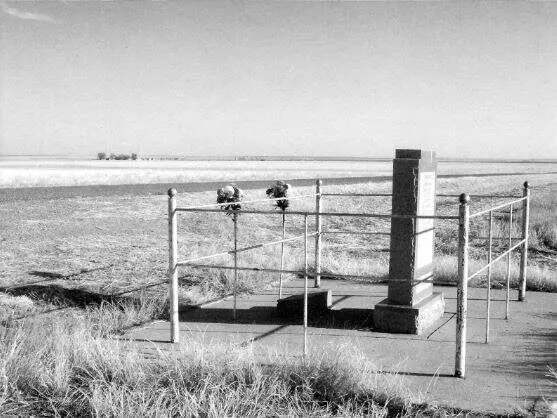
This monument was erected in 1962 to honor the students and bus driver who lost their lives in late March 1931, near Holly, Colorado. (Kiowa County, Colorado)
Immediately taken aback by the intensity of the storm and white-out conditions, Miller took a wrong turn and at some point the bus careened into a ditch at around 9:30 a.m. and the engine stalled, stranding everyone inside, according to the Kiowa County Historic Preservation Commission. For the 22 students on board, the next 33 hours would be the most dangerous of their lives.
Miller, unable to free the vehicle and restart the engine, made sure to have the children jump up and down and move about to stay warm. He even burned the pages of their schoolbooks in a milk can lid to provide some heat, but the smoke soon became too much for them to breath.
Making the situation more dire was the brutal wind ripping off one of the strips of cardboard that had been covering the vehicle's rear windows, allowing snow to blow in. Snow was also piling up through the bottom of the bus, turning the vehicle into a frigid environment.
Determined to find help, Miller put the older youths in charge of the children and set out into the howling storm.
As the minutes turned into long hours as the storm prevailed through the evening hours and with no sign of Miller's return, by daybreak Louise and two other children, aged 7 and 9, had slowly passed away from hypothermia.
Reports at the time stated that temperatures were around minus 20 degrees F with 70-mph winds on March 27, 1931.
Help eventually arrived that afternoon, as two fathers of the missing children found the stranded bus. Breaking the door open, the two started loading the survivors onto a wagon and traveled a half-mile to a nearby ranch. The children who survived the two-day ordeal experienced tremendous pain during their recovery, with two more children dying in the immediate hours after their rescue.
The Pleasant Hill bus tragedy garnering extensive national media attention at the time, with cries of concern heard as the nation first found out about the plight of the stranded schoolchildren.
Miller's body was found by searchers the next day nearly 4 miles south of the bus. Although he was wearing gloves, his hands were badly cut from the barbed wire fence he clung to in an effort to keep his bearings.

A yellow school bus during a snowing day in Toronto in February 2014. (Photo/Roberto Machado Noa/LightRocket via Getty Images)
On March 31, 1931, a group funeral service was held for the children lost in the Pleasant Hill tragedy, with over a thousand residents of southeastern Colorado and western Kansas in attendance. Nearly 90 years later, the lost are not forgotten, becoming the impetus for safe travel of millions of students nationwide.
However, the real work in school bus safety occurred several years later. In 1939, Columbia University professor Frank W. Cyr put together the first National Minimum Standards conference, that established basic standards for manufacturers of school buses. The conference produced the adoption of 44 standards, with perhaps the most important coming in the field of bus visibility. At the conference, representatives from 48 states and from school bus manufacturers agreed that all buses would be painted in a bright yellow hue in order to prevent a bus from being hidden in bad weather, such as what occurred in the Pleasant Hill tragedy. They also required the addition of two-way radios for all school buses to allow for constant communication.
At the beginning of the 1930s, there were no such regulations for school buses, with many school transportation vehicles looking similar to the makeshift transport Miller drove during that fateful March day. The heroic struggle went through by the Pleasant Hill survivors was not for naught, as the end of the decade’s Minimum Standards Conference proved. From the 1939 conference, school bus safety has remained a priority for lawmakers in the United States, as well as for advocacy groups. Several organizations, such as the National School Transportation Association (NSTA) and the National Association for Pupil Transportation (NAPT), were formed to stay on the forefront of modern transportation challenges.
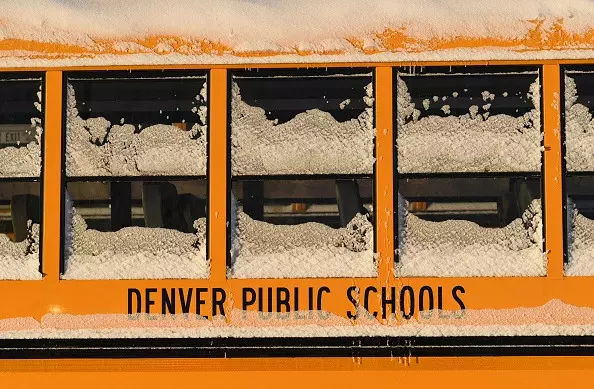
A Denver Public School bus is covered in ice and snow at a bus yard in this Feb. 7, 2019. photo. (Photo/RJ Sangosti/MediaNews Group/The Denver Post via Getty Images)
Recent updates to school bus regulations took place in November 2021, when President Joe Biden signed the “STOP for School Buses Act” in the Infrastructure Investment and Jobs Act (IIJA). The bi-partisan supported bill reauthorized vehicle safety programs until 2026, provided funding for electric school buses and near-zero emission vehicles.
Perhaps most importantly, the bill requires the U.S. Department of Transportation to review illegal passing laws, penalties and levels of enforcement across the 50 states. Preventing illegal passing of school buses is one of the top modern issues of transportation, the NSTA said, with the group’s goal being to “ensure students are just as safe getting on and off their yellow school buses as they are riding inside their yellow school buses.
“Riding in a yellow school bus remains the safest mode of transportation to-and-from school for students,” NSTA President Carina Noble stated. “Unfortunately, illegal school bus passings by motorists continue to plague the nation, and the comprehensive U.S.D.O.T. program to address illegal passing … will implement a national campaign to raise local awareness of this most concerning issue with the shared goal of making student commutes even safer.”
